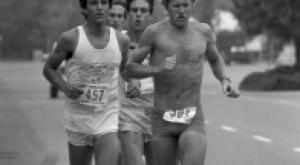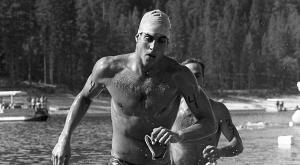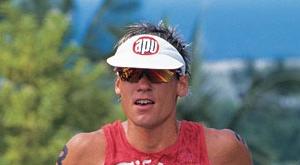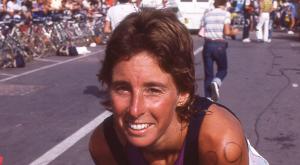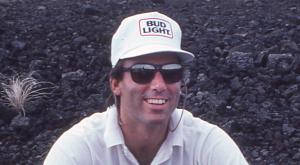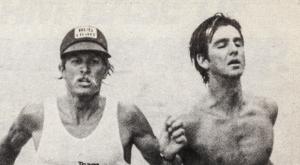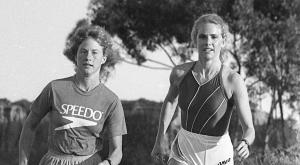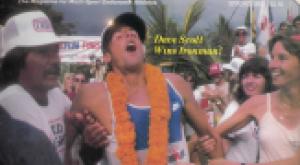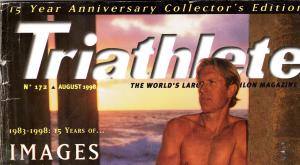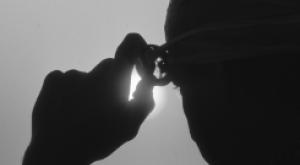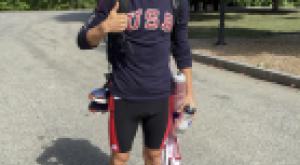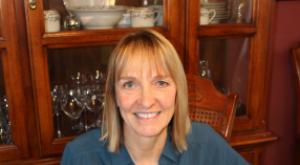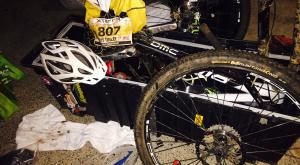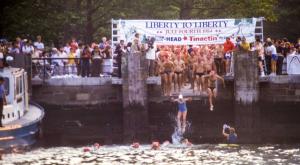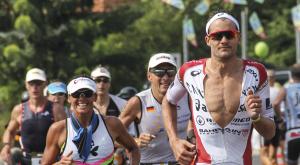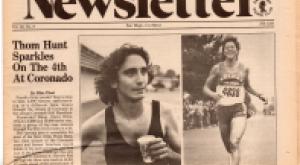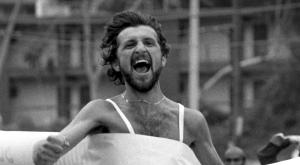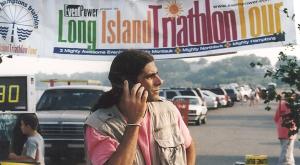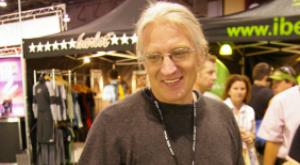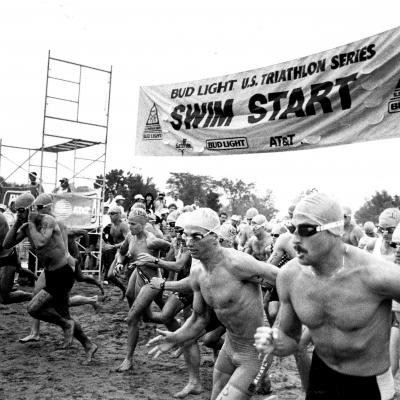
A field of some 80 pros heads to the water at the Tampa Bay USTS in 1984, and the landmark series inaugurates a new format that included wave starts and new distances. Photo courtesy of Jim Curl.
The first triathlon wave start was staged on April 28, 1984, at the Bud Light U.S. Triathlon Series season opener at Fort DeSoto Park in Tampa Bay, Fla. But the wave start concept came out of a discussion the previous season at the USTS race at Belmont Shores in Long Beach, Calif.
The Long Beach race in '83 was to have been an unlikely showdown between a pair of identical twins: Sylviane and Patricia Puntous of Montreal, Canada and Jan and Diane Girard, from Austin, Texas. The totally unexpected winner was Dave Scott's girlfriend at the time, Linda Buchanan, whose too-short but quite glorious career would include a victory at the Nice Triathlon in France later that same year.
In any case, after the Long Beach event, my old friend and mentor Sally Edwards complained bitterly to me about the swim. As was usual for all triathlons at the time, the entire field went off at once (we used to call it the "Cuisinart" start), with a single turn around a single buoy placed 750 meters offshore. Sally had been pummeled in the blender at the start that morning, then pummeled again, even more severely, at the turn. What were we going to do about it? Sally demanded.
I was still trying to answer that question in the off-season when I came upon a description of the Bolder Boulder 10K run, which had instituted a wave start system that year to ensure that runners of all ability levels were able to enjoy the event on their own terms and race (or not) at their own pace.
"If you just fired the gun and everybody took off, most people wouldn't be able to ever get up to speed and race," Bolder Boulder founder Steve Bosley, recalled at a recent talk at Colorado University. Bosely is now a member of the CU Board of Regents. In 2014, his race will deploy 104 waves to accommodate some 51,000 runners.
I saw immediately that Bosely was on to something. And it was a simple concept that could be refined over time as additional data was collected: the time of your wave's start was deducted from your finish time. The elite men would start at 0:00 and all others after that.
Perfect! Over the winter, we came up with a numbering and colored swim cap system that allowed us to divide the swimmers into wave starts according to categories: elite men, elite women and then by sex and age. We designed a 'corral' staging process that kept it all manageable: signs for waves, flag pennants to keep them separate, gated and fenced pre-start areas where we could insure all caps were same color, etc.
We also added a computer timing company that made the sorting of the staggered times at the finish line manageable.
That was it. We rolled the new format out in Tampa Bay in '84, along with the new 1.5K/40K/10K distances (a story for a later time). The system allowed safer starts, and gave age-group competitors a chance to race head-to-head against their peers, while the finish of the race for the pros was still accurate and exciting.
For the record, here are the pro results from the Tampa Bay race in 1984:
Men
1. Mark Allen (1:49:39)
2. Scott Molina (1:53:17)
3. Rob Roller (1:54:10)
Women
1. Colleen Cannon (2:09:24)
2. Lil Hallick (2:10:57)
3. Barbie Bell (2:12:14)
Jim Curl was the co-founder of CAT Sports, producer the US Triathlon Series, and a USAT Hall of Fame inductee. Throughout his career with CAT, Curl was a major innovator in triathlon, with an influence that is still in evidence today. A Curl-designed race course in the 1980's and '90s was invariably unique, physically and operationally challenging, accessible to spectators, and always fun to watch. He continues to produce cycling and multisport events.


